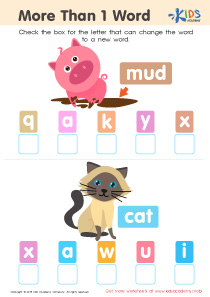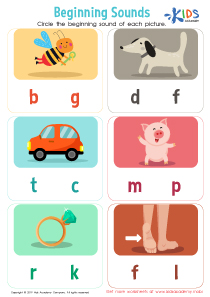Phonics recognition Consonants Worksheets for Ages 3-7
4 filtered results
-
From - To
Boost your child's phonics recognition skills with our engaging Consonants Worksheets designed specifically for ages 3-7! These interactive resources introduce foundational consonant sounds through fun activities, ensuring an enjoyable learning experience. Our carefully crafted worksheets incorporate tracing, coloring, and identifying consonants, making learning both effective and entertaining. Perfect for preschool and early elementary learners, these worksheets help reinforce critical phonics skills, paving the way for reading success. With colorful illustrations and age-appropriate tasks, your child will enjoy exploring consonants while building confidence in their literacy journey. Start their phonics adventure today with our delightful collection of worksheets!
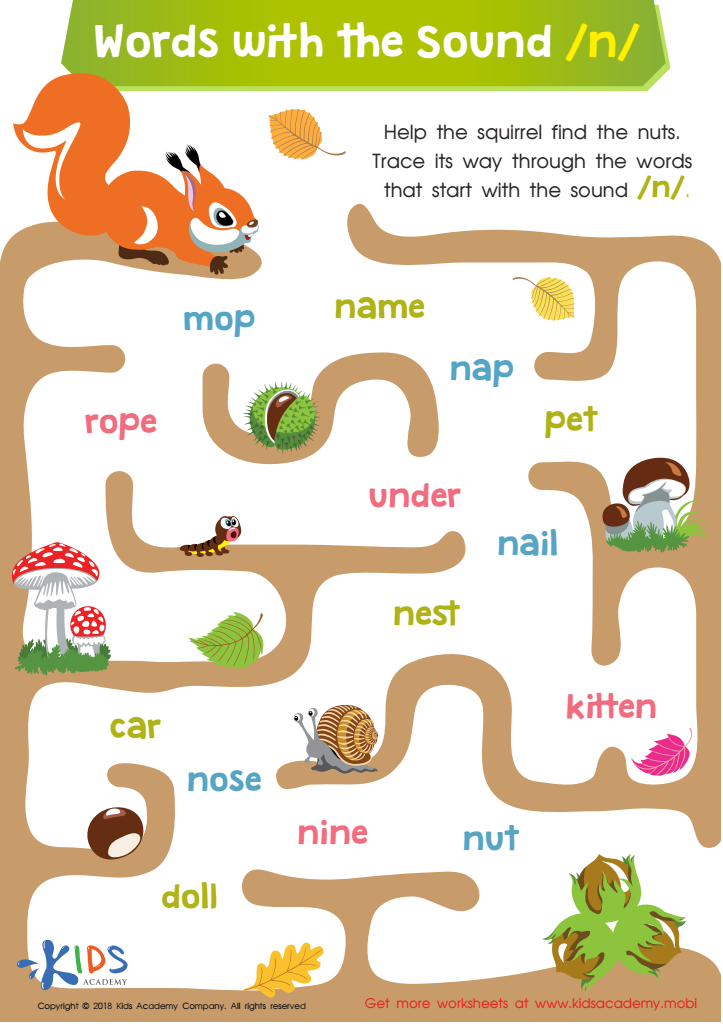

Words with Sound N Reading Worksheet


Where Is the Digraph? Worksheet
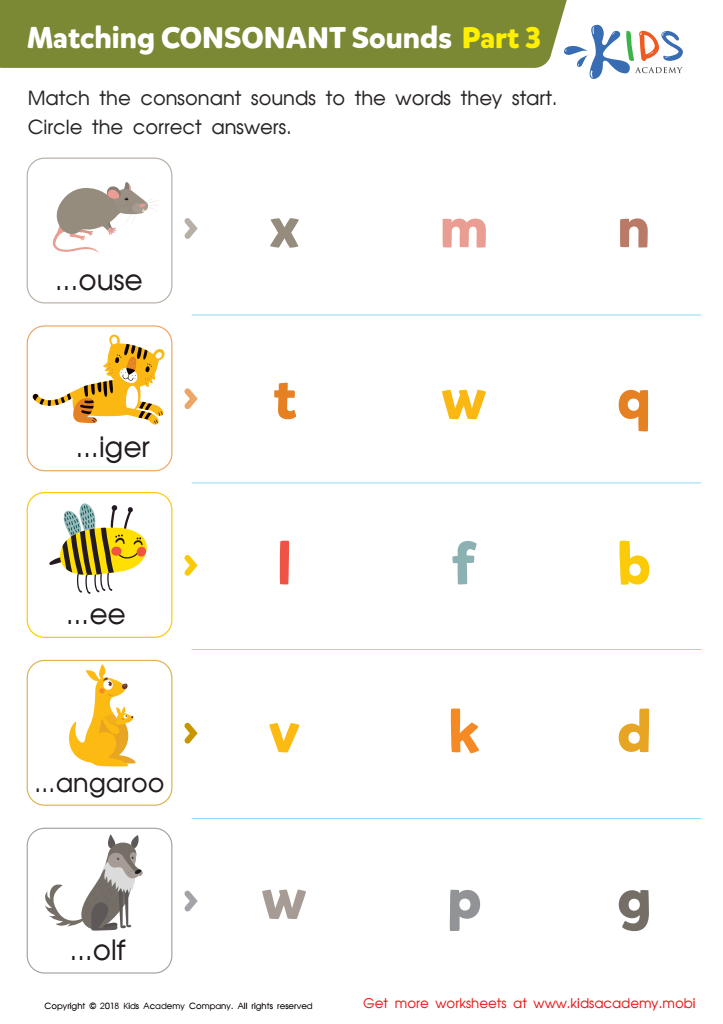

Matching Consonant Sounds: Part 3 Worksheet
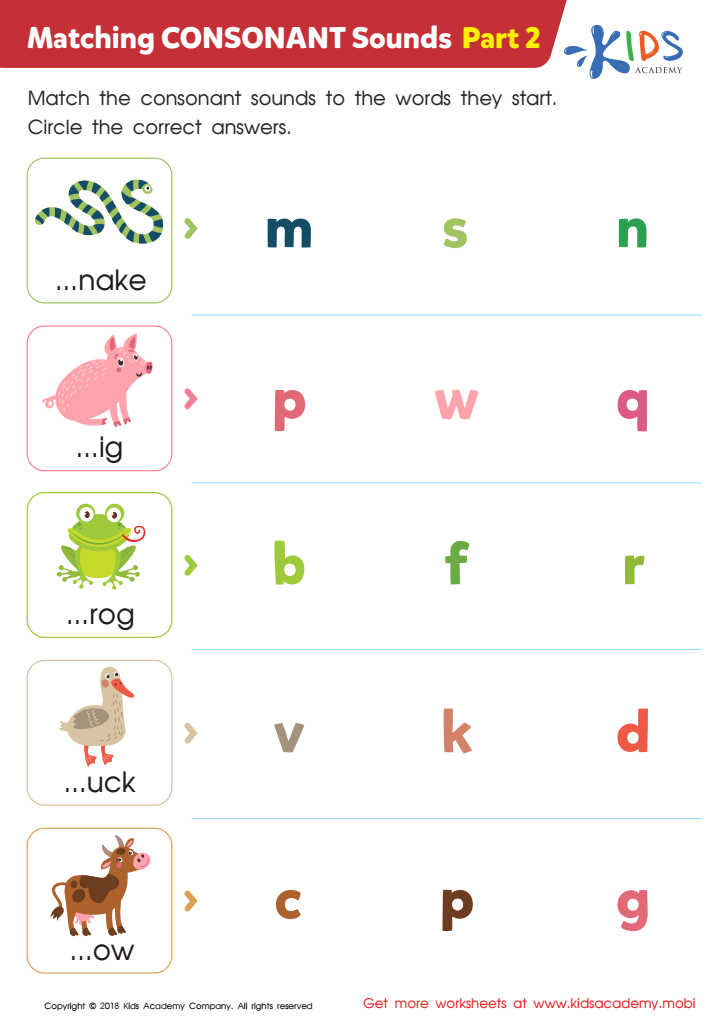

Matching Consonant Sounds: Part 2 Worksheet
Phonics recognition, particularly with consonants, is crucial for children aged 3-7 as it lays the foundation for reading and language development. At this stage, children are beginning to understand that letters represent sounds, which is essential for decoding words. Recognizing consonants helps them identify the beginning sounds in words, enabling them to build connections between sounds and letters.
When parents and teachers prioritize phonics instruction, they equip children with essential tools for literacy. This early exposure fosters confidence as children start to read simple words and play with language, enhancing their vocabulary and communication skills. Furthermore, a strong grasp of consonants aids in spelling, critical for developing writing abilities.
Moreover, phonics recognition encourages cognitive development; grasping sound-letter relationships enhances memory and promotes critical thinking as children learn to segment and blend sounds. By fostering an engaging environment that emphasizes phonics, parents and teachers nurture a love for reading, setting the stage for lifelong learning.
In summary, caring about phonics recognition of consonants for young children is an investment in their academic success and self-esteem, ultimately forming the basis for effective reading and writing skills in later years.

 Assign to My Students
Assign to My Students





